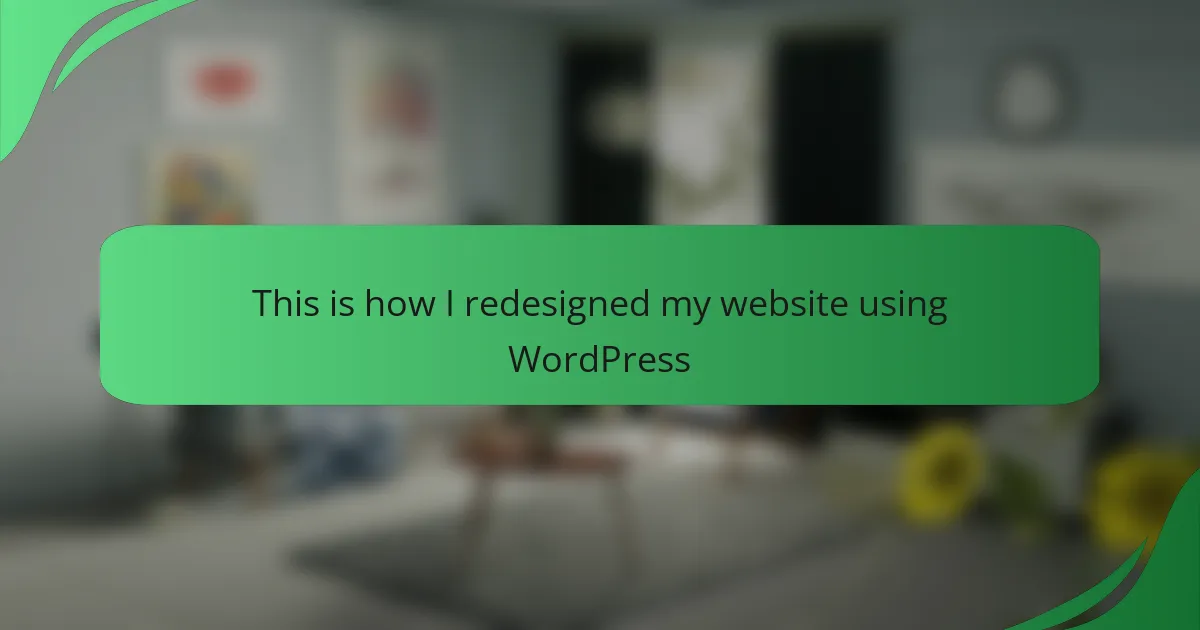Key takeaways
- Interface interaction design focuses on creating seamless user experiences through usability, accessibility, and satisfaction.
- Figma plugins enhance design workflows by automating repetitive tasks, fostering collaboration, and providing access to diverse design resources.
- Popular plugins like Content Reel and Unsplash significantly improve efficiency and creativity in the design process.
- Utilizing plugins can lead to better accessibility and user-friendly interfaces by allowing designers to focus on innovative aspects rather than mundane tasks.
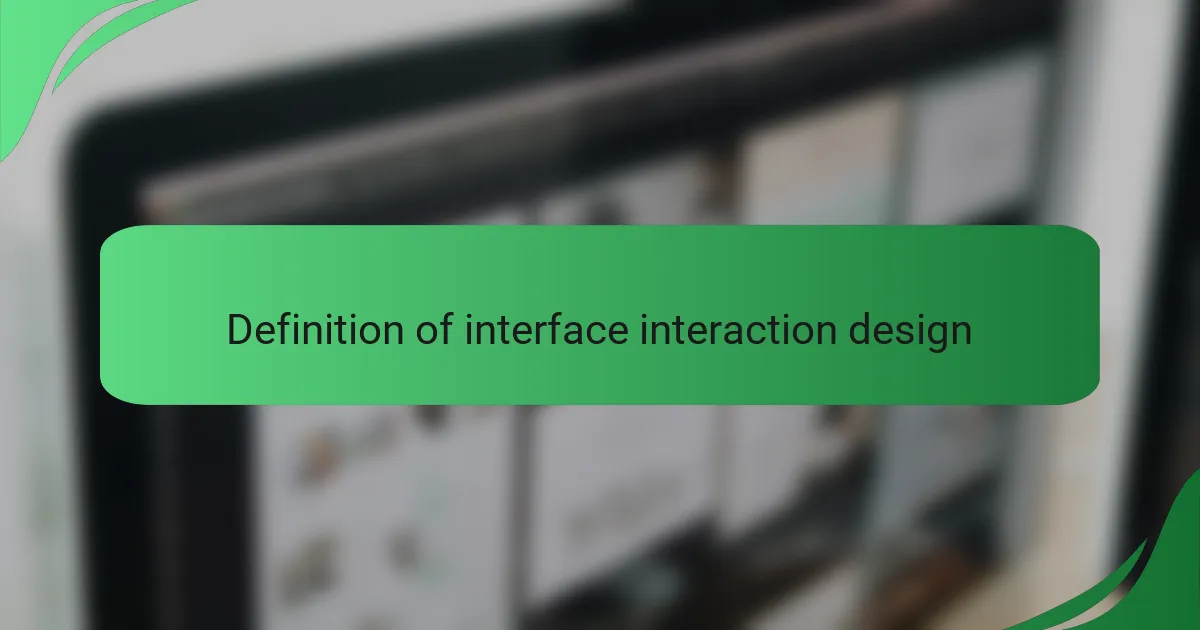
Definition of interface interaction design
Interface interaction design is fundamentally about shaping how users engage with digital products, focusing on the seamless interaction between users and systems. I remember my first project where I struggled to understand how small changes in layout could dramatically affect user experience. It’s fascinating how effectively designed interfaces can guide users’ emotions and responses, making them feel either empowered or frustrated.
At its core, interface interaction design encompasses elements like usability, accessibility, and user satisfaction. I often find myself pondering, how can a designer create an experience that resonates with users on a deeper level? This question drives me to explore various design principles, ensuring that every click, scroll, and tap contributes to an enjoyable experience.
Furthermore, the beauty of interface interaction design lies in its ability to evolve with technology and human behavior. Each successful project is a stepping stone, teaching invaluable lessons about what works and what doesn’t. It’s almost like a dance where designers must anticipate the user’s moves, creating harmonious interactions that feel intuitive and, ultimately, satisfying.
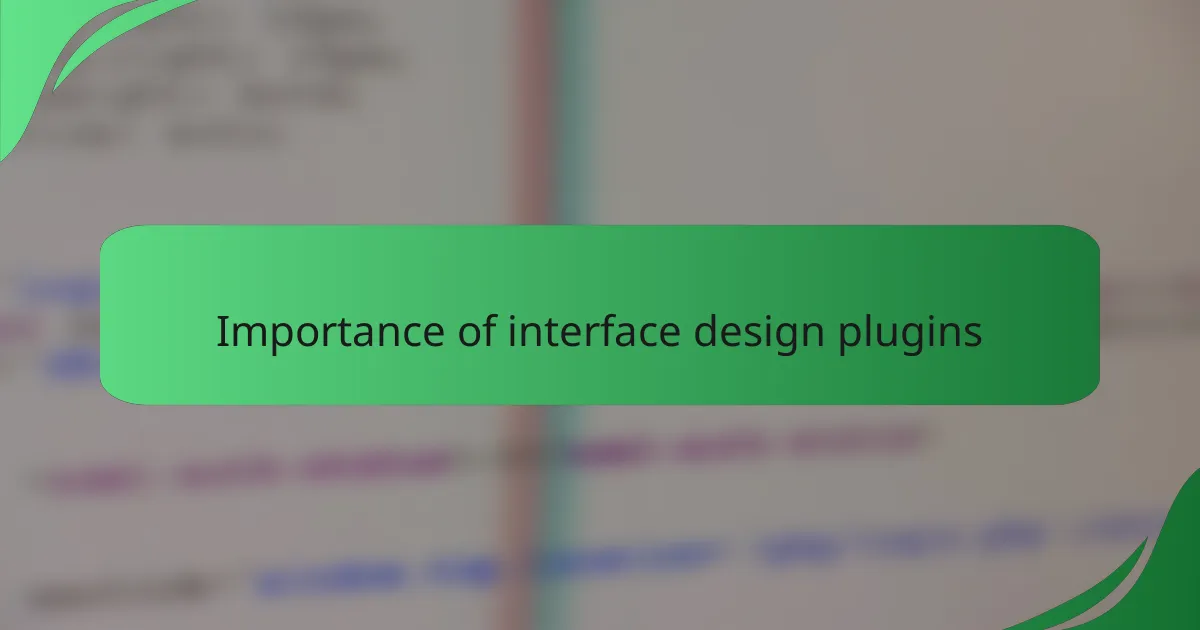
Importance of interface design plugins
The importance of interface design plugins cannot be overstated in today’s fast-paced design environment. Personally, I’ve found that these tools significantly streamline my workflow, allowing me to focus more on the creative aspects rather than spending precious time on routine tasks. For instance, when I discovered plugins that automate repetitive processes, it was like unlocking a treasure trove of efficiency.
Moreover, plugins offer functionality that expands the capabilities of Figma beyond its core features. I remember the first time I used a color palette generator plugin; it felt like a revelation, empowering me to explore color combinations I wouldn’t have considered otherwise. This not only enhances creativity but also improves the overall user experience when designs come to life.
Here’s a quick look at how some popular Figma plugins compare in terms of functionality and ease of use:
| Plugin Name | Functionality |
|---|---|
| Content Reel | Effortlessly manage images and text for mockups. |
| Color Search | Find and apply color palettes seamlessly. |
| Figmotion | Add animations directly in your designs. |
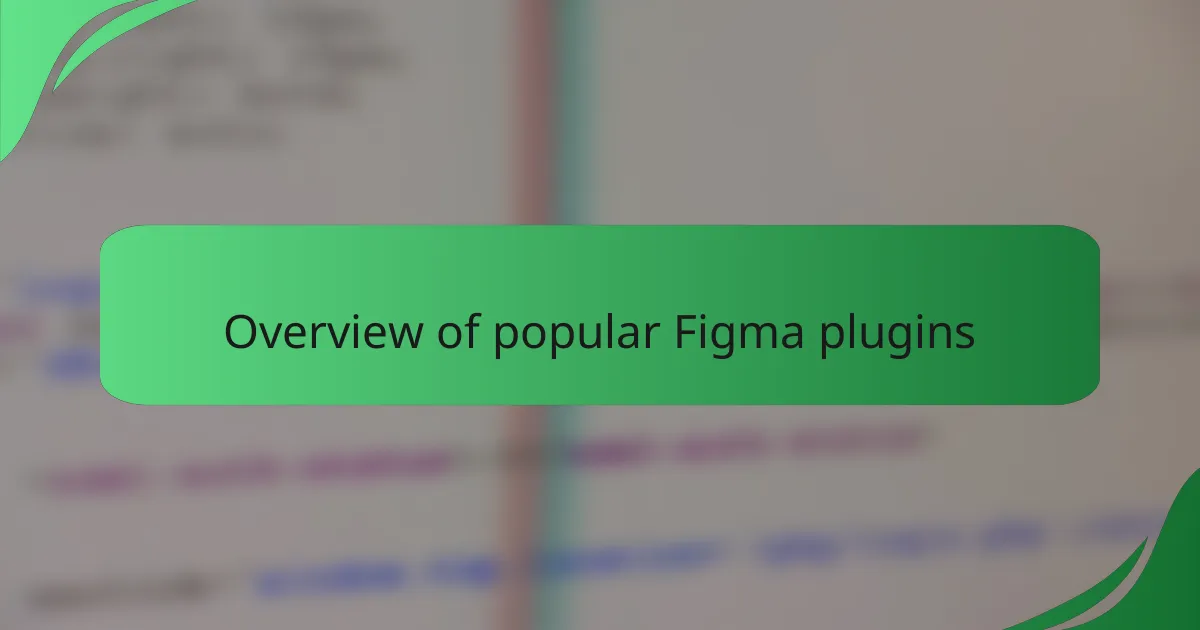
Overview of popular Figma plugins
Figma plugins have become a game-changer in my design process, streamlining workflows and enhancing creativity. For instance, using the Unsplash plugin for quick and high-quality images has made my projects not only faster but also visually richer. It’s like having a vast library at my fingertips, which often sparks new ideas during design sessions.
Another plugin that I find invaluable is the Content Reel, which allows me to easily manage text and images. I love how it enables me to quickly pull in real data, making my prototypes feel more authentic. This has saved me hours of manual work and prevented the dreaded “Lorem Ipsum” syndrome. Here’s a quick overview of some popular Figma plugins that I recommend:
- Unsplash: Provides access to a library of free images for quick integration.
- Content Reel: Lets you manage and insert text and images swiftly.
- Auto Layout: Automates responsive design, making adjustments seamless.
- Figmotion: Adds animation capabilities right within Figma for dynamic prototypes.
- Plugins for accessibility: Help check color contrast and ensure designs are inclusive.
Each of these plugins has enriched my design experience, and I encourage fellow designers to experiment with them.

How plugins enhance design workflow
Using plugins in Figma has truly transformed the way I approach my design projects. I can vividly remember the days when I would spend hours on mundane tasks, feeling frustrated and mentally drained. Now, with plugins like Auto Layout, I can streamline my layout adjustments effortlessly, letting me focus on creativity rather than getting bogged down by repetitive work. It feels liberating!
One aspect I particularly love about plugins is how they foster collaboration. For instance, using the Content Reel plugin has allowed me to easily share mockups with team members, incorporating real data that enhances our discussions. Have you ever felt stuck trying to communicate a design idea? With plugins, the clarity and authenticity of my presentations have significantly improved, resulting in more meaningful feedback.
It’s astonishing how these tools can spark creativity and make the design process feel more fluid. I recall a brainstorming session where the Color Search plugin helped us discover unexpected color combinations that aligned perfectly with our project vision. Isn’t it fascinating how a simple plugin can ignite a wave of inspiration? Each click seems to open up new possibilities, making the workflow not just efficient, but genuinely enjoyable.
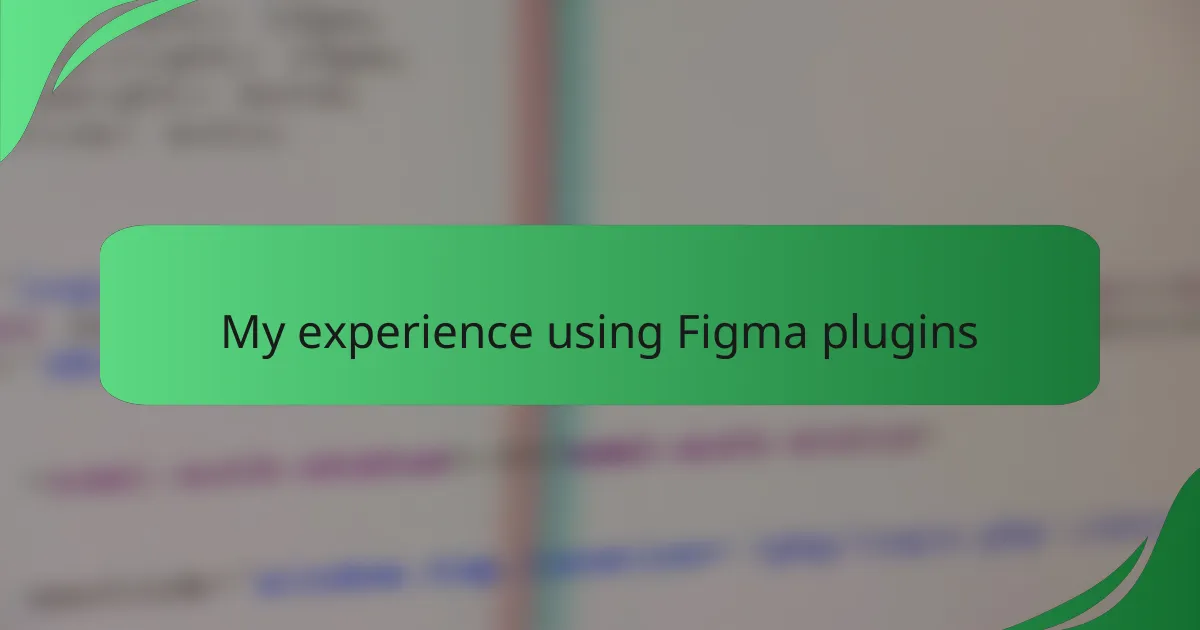
My experience using Figma plugins
Using Figma plugins has truly transformed my design process. I remember a time when I spent hours manually adjusting layouts and managing assets. Now, with just a few clicks, I can use plugins to automate repetitive tasks and streamline my workflow. For instance, the Unsplash plugin lets me easily source high-quality images, which used to be a tedious hunt.
Over time, I’ve discovered several plugins that have become vital to my design toolkit. Each one enhances my creativity and efficiency in unique ways. Here are some of my favorites and how they’ve impacted my projects:
- Content Reel: Offers a quick way to pull in placeholder text, images, and icons, saving me a lot of time.
- Figmotion: A great tool for incorporating animations directly within Figma, which helps bring my designs to life without needing to switch platforms.
- Stark: This plugin is invaluable for accessibility checks, ensuring my designs are inclusive and reach a wider audience.
- Blush: Enables me to create custom illustrations that fit my design style, adding a personal touch to my projects.
These plugins not only enhance my productivity but also spark joy in my design process—they make me feel like I have a creative assistant at my fingertips.

Key benefits I observed
As I delved into the world of Figma plugins, I quickly realized how they can significantly streamline my workflow. For instance, using the Accessibility Checker plugin was a game-changer; it helped me identify color contrast issues in my designs, ensuring that I consider all users. It’s these small adjustments that can make a huge difference, not just in aesthetics, but in creating truly user-friendly interfaces.
Moreover, the ability to automate repetitive tasks through plugins like Content Reel not only saves me time but also sparks creativity. I recall a project where I spent hours searching for images and text placeholders. Once I integrated Content Reel, those hours turned into just a few clicks, leading to a more efficient design process. I felt a wave of relief knowing I could focus on the creative aspects rather than getting bogged down in the mundane.
Key Benefits I Observed:
– Increased Efficiency: Automating repetitive tasks reduces time spent on manual entry.
– Enhanced Collaboration: Plugins encourage better teamwork by integrating tools like comments and feedback directly into the design.
– Improved Accessibility: Tools specifically aimed at checking accessibility help creators design for a broader audience.
– Creative Inspiration: Access to diverse resources and design elements sparks new ideas during the design process.
– Ease of Use: Plugins often come with user-friendly interfaces that are simple to learn, making it easy to integrate them into existing workflows.




